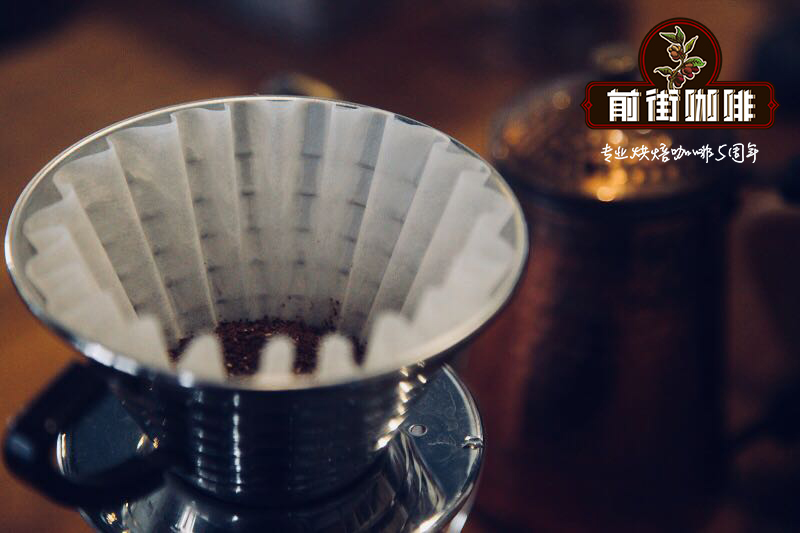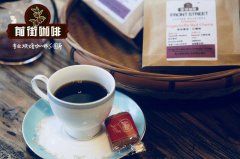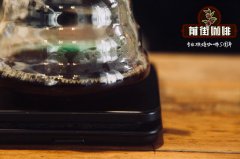Which brand of Indian coffee beans is good? is there any magic oil in Indian coffee? Is Indian coffee famous?

Professional coffee knowledge exchange more coffee bean information please follow the coffee workshop (Wechat official account cafe_style)
There are several reasons why Indian coffee is popular with coffee lovers, but the most important is a process used on coffee beans, often referred to as the "monsooning" process.
● Monsoon Coffee (Rainy season Malaba) is a unique coffee from southern India using a typical air-drying process, specially stored in an open warehouse and exposed to the monsoon to increase viscosity and reduce acidity.
Monsoon coffee is stored in a special warehouse until the monsoon arrives, and the ventilation structure is designed to allow the moist monsoon to circulate between the coffee beans, so that its volume expands and shows a mellow but strong mildew smell. The monsoon process is labor-intensive: coffee is spread out in special ventilated warehouses and raked or turned by hand to allow coffee beans to absorb moisture in the moist wind. The whole process takes 12 to 16 months, in which the coffee beans expand to twice their original volume and have a dull golden yellow. Then the coffee beans that are not fully inflated are picked out with extra processing, and the rest of the coffee is to be exported.
The aroma of this dried coffee is not very strong, but with the addition of water, a combination of strongly roasted nuts (dry-roasted peanuts), caramel and tobacco come to the nostrils.
● Coffee production in India:
Coffee is grown in the Gaozhi Mountains in western India, and the southwest monsoon is crucial to coffee growth there. In addition to Karnataka, good coffee is grown in Tellichery and Malabar in the southwestern state of Kerala, as well as in Nilgiris in the southeastern state of TamilNadu (formerly known as Madras).
India has plateaus and plains, mainly in the middle, and plains along the east and west coasts. Soil, water and climate are very suitable for growing coffee, and there are many varieties of coffee that can be planted, mainly Arabica. Robusta was introduced at the end of the 19th century and accounted for a certain proportion. Monsoon coffee comes from the southern state of Karataka represented by Mysore and Tamil Nadu represented by Madras.
The best Indian coffee is also classified as Arabian plantation coffee, with the best grades A, B, C and T. "monsoon" coffee is divided into high-quality MonsoonedMalabar (AA) coffee and "monsoon" Basan Nicoli (MonsoonedBasanically) coffee. India also produces some bean-shaped berry coffee. October to February is a good time to make "monsoon" coffee. Coffee beans are harvested from June to September every year, and from December to February next year, it is the season for processing Indian boutique coffee.
● Indian Coffee features:
Monsoon coffee is the most representative type of coffee in India. In fact, India is the first country in Asia to grow coffee. The cultivation of Indian coffee originated from their colonists-the British. As early as the 17th and early 18th centuries, the English were not as addicted to tea as they are now, they liked coffee. The coffee growing industry in India has grown rapidly under the demand and promotion of the British.
Strictly speaking, monsoon coffee can not be attributed to coffee varieties, but a unique processing method of raw coffee beans, is a new flavor created inadvertently. In the 17th and 18th centuries, India shipped coffee beans to Europe by sailboat, which took six months. The raw beans were placed on the bottom of the barn and absorbed the moisture and salty taste of the sea. The raw beans arrived in Europe long ago. The color changed from dark green to the yellowish brown of rice. The acidity of the coffee almost disappeared, but it unexpectedly developed a strong nutty and cereal flavor. It tasted full, with a bit of black rice tea flavor. Surprisingly, Nordic people like this kind of golden alternative coffee very much.
Monsoon coffee needs to be made with sun beans. The factory where beans are stored faces to the west. The beans are laid flat in the field, and the windows are all open to catch the salty monsoon from the southwest. After reaching a certain extent, put it into the bag, but the coffee beans should not be too full, and the coffee bags should not be piled too dense so as not to be airtight and moldy, and it is time-consuming and labor-consuming to pour out coffee beans and replace sacks from time to time to avoid mold. This period of time is about 12 to 16 weeks, and after it is ripe, it will be fumigated to drive out the weevil, and finally to sift out the failed beans that have not turned golden.
After at least six months to a year of monsoon blowing, the quality and quantity of beans have changed significantly. Coffee beans will swell to twice their size, reduce their weight and density, and have a moisture content of about 13%.
When steamships shorten the journey time, coffee producers find that consumers still want beans of the same color and taste that are affected by long trips. In order to recreate the flavor of the original coffee, the "monsoon" process was used.
Flavor: smooth and delicious, strong, spicy, full of particles
Suggested baking method: medium baking
★★: good
● Indian Coffee Market:
Currently, the Coffee Council of India (IndianCoffeeBoard) controls the entire coffee industry, buying coffee and then selling it. Coffee is sold at mass auctions. These coffees are mixed together to reach a certain trade volume, which eliminates the differences between manors and regions, so that many high-quality coffee producers lack sufficient motivation to produce unique and high-quality coffee beans. The government tried to solve this problem in 1992, and through its efforts, the famous ValleyNuggets coffee was obtained through seeds from A-grade coffee plantations in several quality coffee producing areas.
● Indian Coffee Bean Brand recommendation
The Indian coffee beans baked in Qianjie Coffee-Wind-stained Malaba Coffee are fully guaranteed in terms of brand and quality. And more importantly, the performance-to-price ratio is extremely high, a pack of half a pound 227 grams, the price is only about 80 yuan. According to the calculation of 15 grams of powder per cup of hand-brewed coffee, 15 cups of coffee can be made in a bag, and each cup of coffee costs only about 5 yuan, which is very cost-effective for coffee shops to sell dozens of yuan a cup.
Qianjie coffee: Guangzhou bakery, the store is small but a variety of beans, you can find a variety of unknown beans, but also provide online store services. Https://shop104210103.taobao.com
Important Notice :
前街咖啡 FrontStreet Coffee has moved to new addredd:
FrontStreet Coffee Address: 315,Donghua East Road,GuangZhou
Tel:020 38364473
- Prev

Indian Malaba Monsoon Coffee Story _ South Indian Coffee characteristic Flavor _ how about Indian Coffee
Professional coffee knowledge exchange more coffee bean information please follow the coffee workshop (Wechat official account cafe_style) We should thank nature. It not only gives us the air, water and food on which we live. It occasionally does a trick, giving us unexpected surprises and delicacies that can only be tasted at a particular time and place. ● is like this Indian monsoon Malabaka.
- Next

How to drink Indian style-stained Malaba Coffee _ recommended by Indian Coffee Bean Brand _ is Indian Coffee good
Professional coffee knowledge exchange more coffee bean information please follow the coffee workshop (Wechat official account cafe_style) 01 Coffee production areas in India coffee was brought into the establishment of the first coffee farm by pilgrims as early as the 16th century, you may not imagine that India produces a lot more coffee than Ethiopia and any Central American country, with 900000 hectares of land growing coffee.
Related
- Does Rose Summer choose Blue, Green or Red? Detailed explanation of Rose Summer Coffee plots and Classification in Panamanian Jade Manor
- What is the difference between the origin, producing area, processing plant, cooperative and manor of coffee beans?
- How fine does the espresso powder fit? how to grind the espresso?
- Sca coffee roasting degree color card coffee roasting degree 8 roasting color values what do you mean?
- The practice of lattes: how to make lattes at home
- Introduction to Indonesian Fine Coffee beans-- Java Coffee producing area of Indonesian Arabica Coffee
- How much will the flavor of light and medium roasted rose summer be expressed? What baking level is rose summer suitable for?
- Introduction to the characteristics of washing, sun-drying or wet-planing coffee commonly used in Mantenin, Indonesia
- Price characteristics of Arabica Coffee Bean Starbucks introduction to Manning Coffee Bean Taste producing area Variety Manor
- What is the authentic Yega flavor? What are the flavor characteristics of the really excellent Yejasuffi coffee beans?

